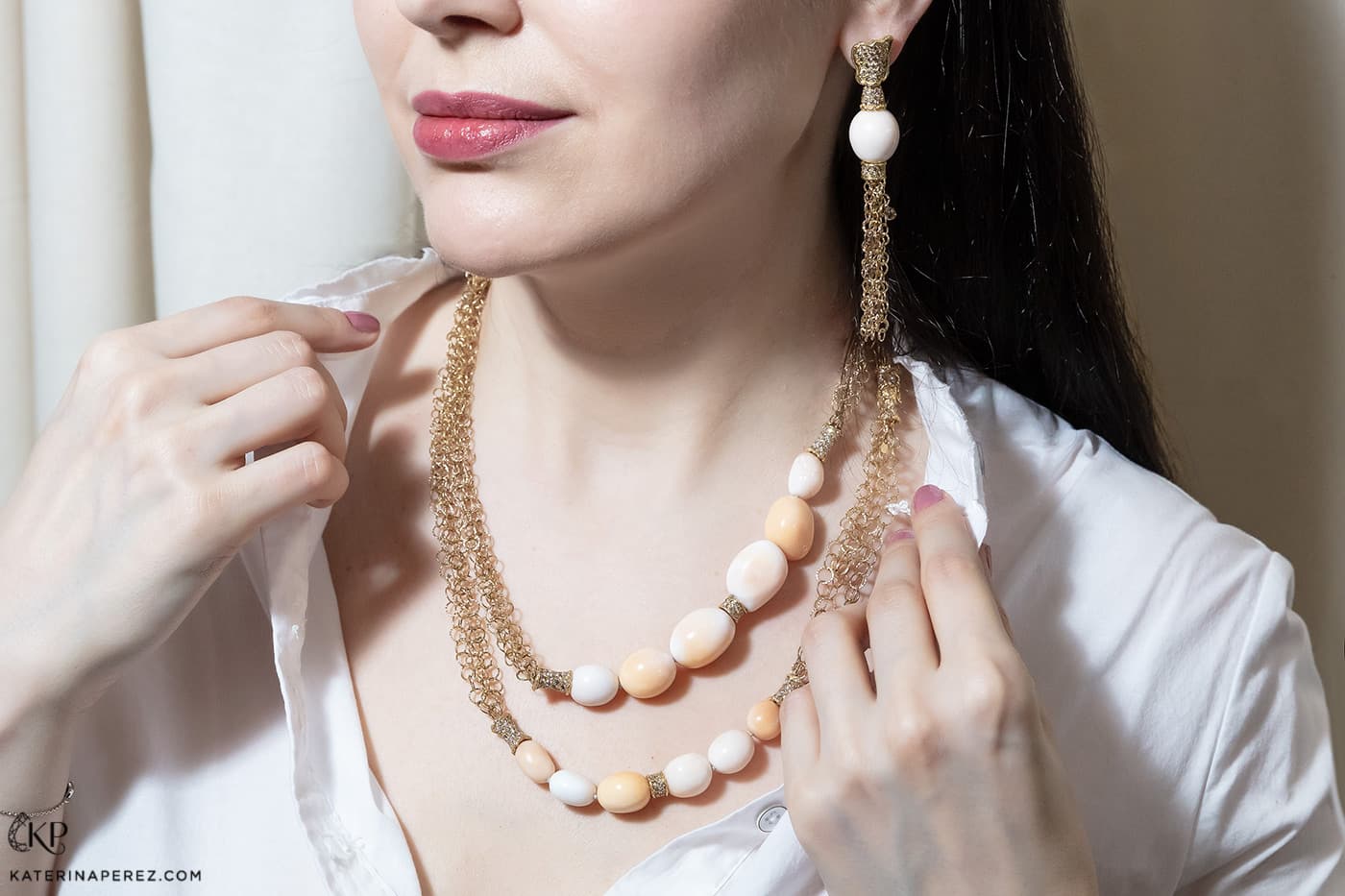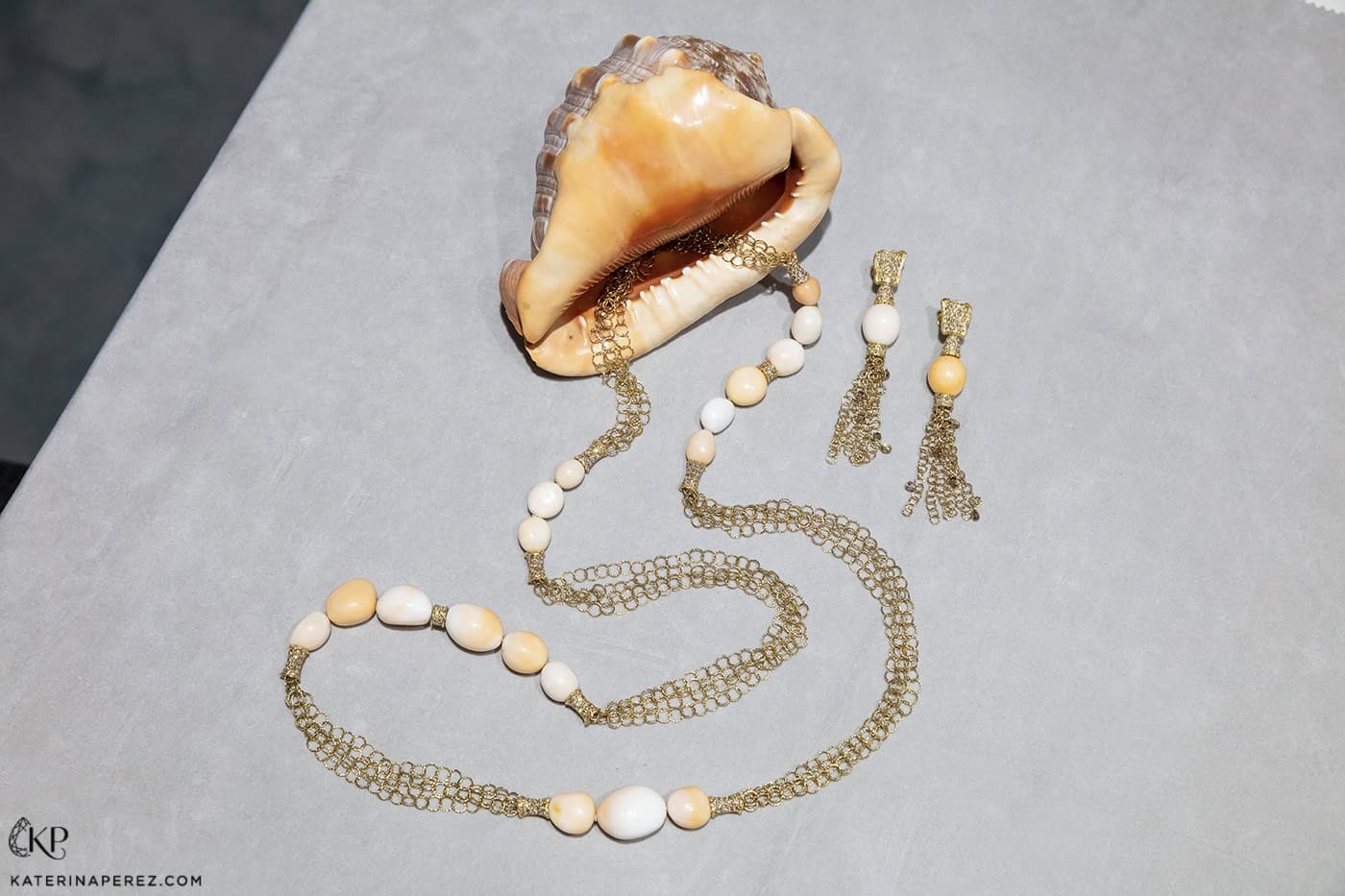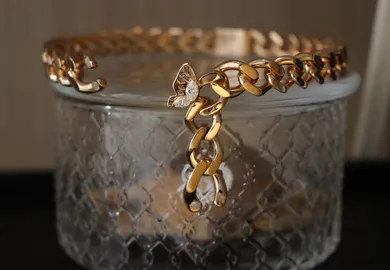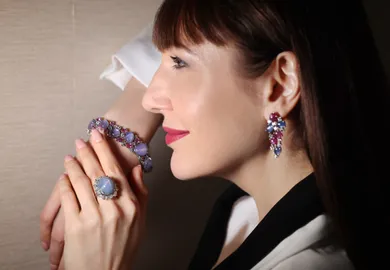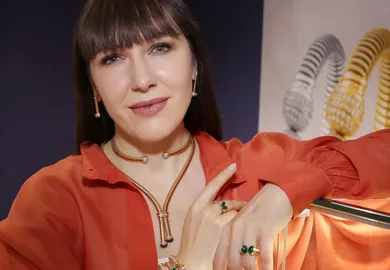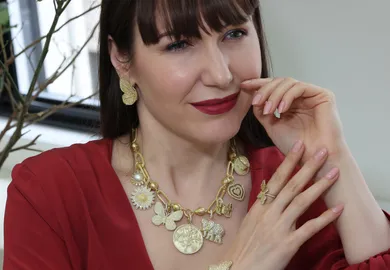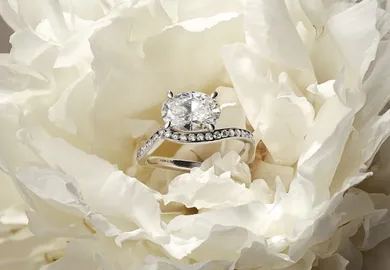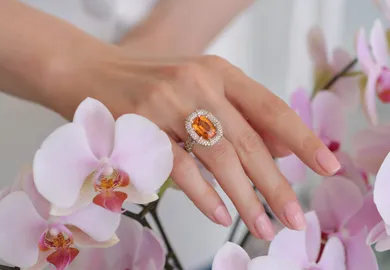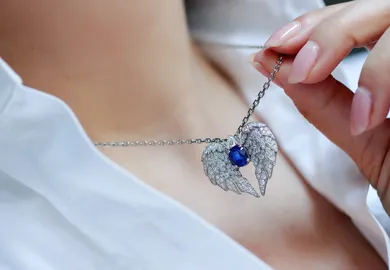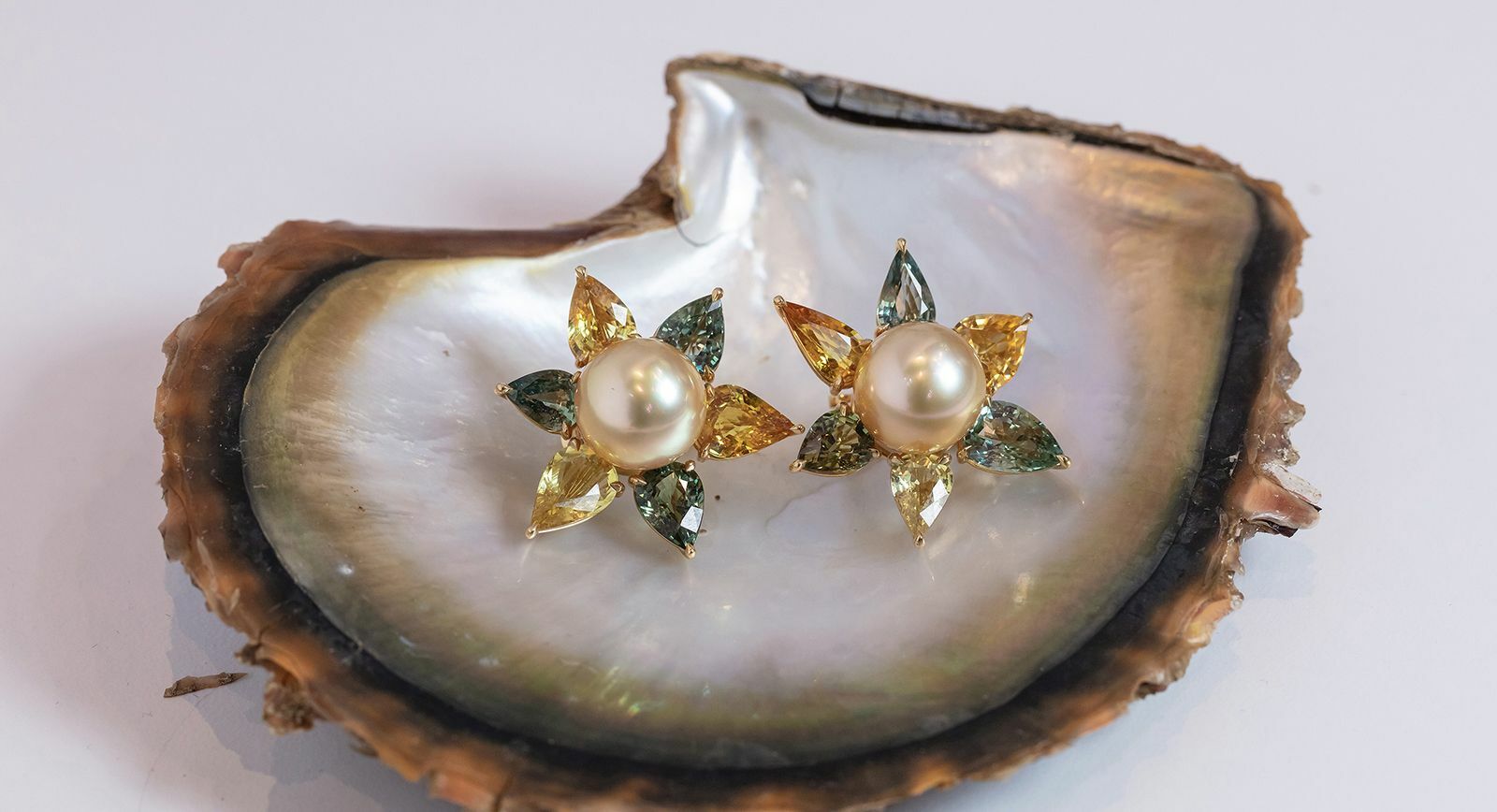
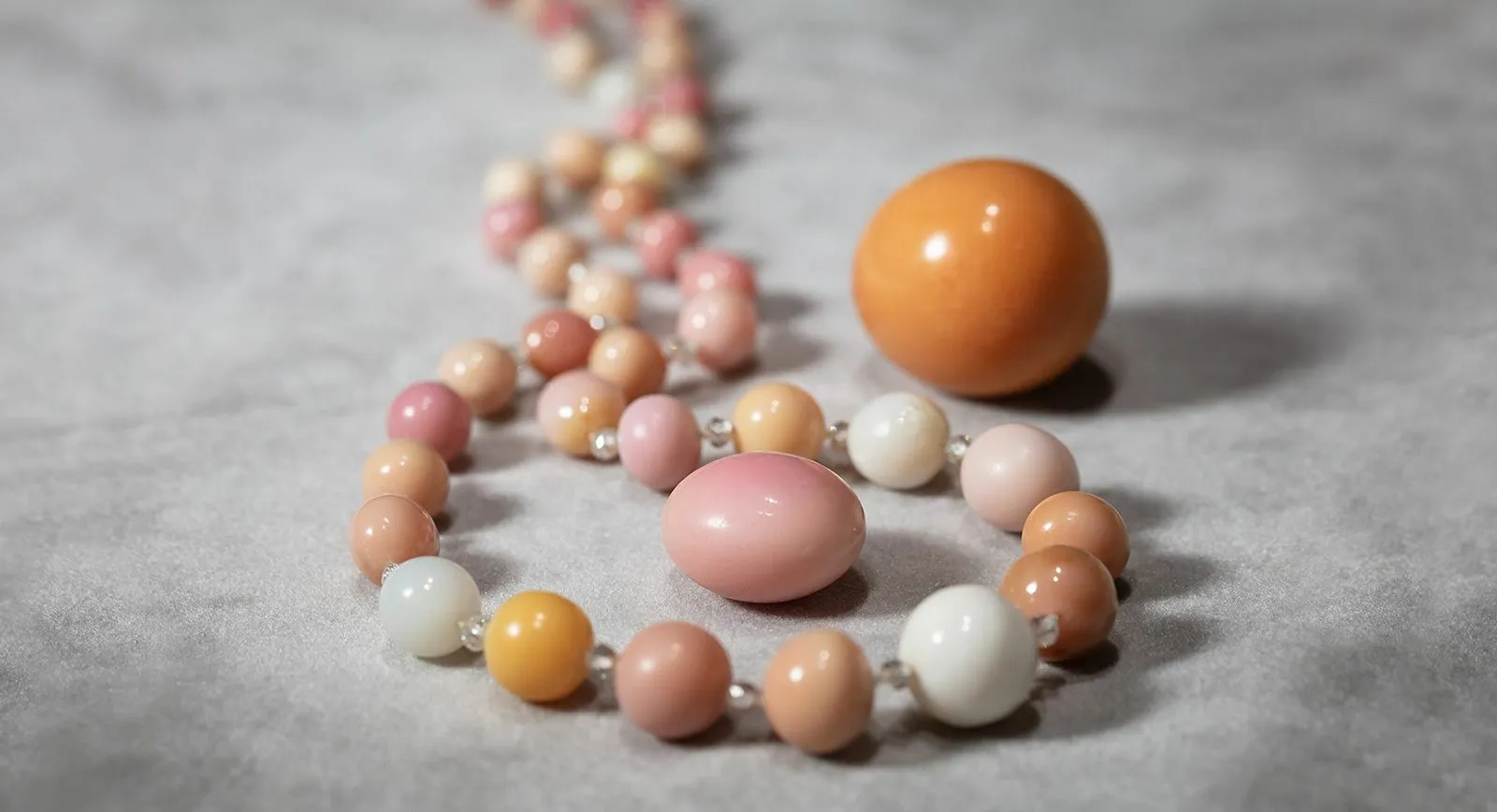
Conch Pearls: Shanghai Gems S.A. Explain the Factors that Impact their Price
The conch pearl is one of the rarest marine minerals that exists in nature. It is impossible to mistake its pinkish-white, sometimes yellow, brown or red surface colour with traditional pearls. The main aesthetic point of difference between conch pearls and all other species of pearls is that they are porcelanous or non-nacreous pearls, with different lustre than nacreous pearls are known for. The conch pearl is also found in a completely different shell to other pearls: the Strombus gigas known as the Gastropod mollusc – or also – the Queen Conch shell. I spoke about this natural treasure with Luciano Policicchio, managing director of Shanghai Gems S.A., a company which specialises in sourcing and selling exquisite conch pearls as well as many others natural pearls species.
Since establishing Shanghai Gems S.A. in 1989 in Geneva, the goal of the company has been to work closely with pearl farms. This way they cut out the middleman in order to acquire expert knowledge of rare pearls and their variations, as well as offering the best prices to their clients. After over 30 years of hard work, Shanghai Gems S.A. has achieved great success, and is now considered one of the market leaders for rare pearls. They can source the rarest and most valuable specimens of this particular maritime nonpareil, for example a perfect 15mm x17mm oval conch (22 carats) with this precious material’s distinctive ‘flames’ on the surface, or a 9,9mm x14,4mm (7.26 carats) teardrop-shaped pearl, whose colour transitions resemble the shell it comes from and of course, ‘flames’ on its surface.
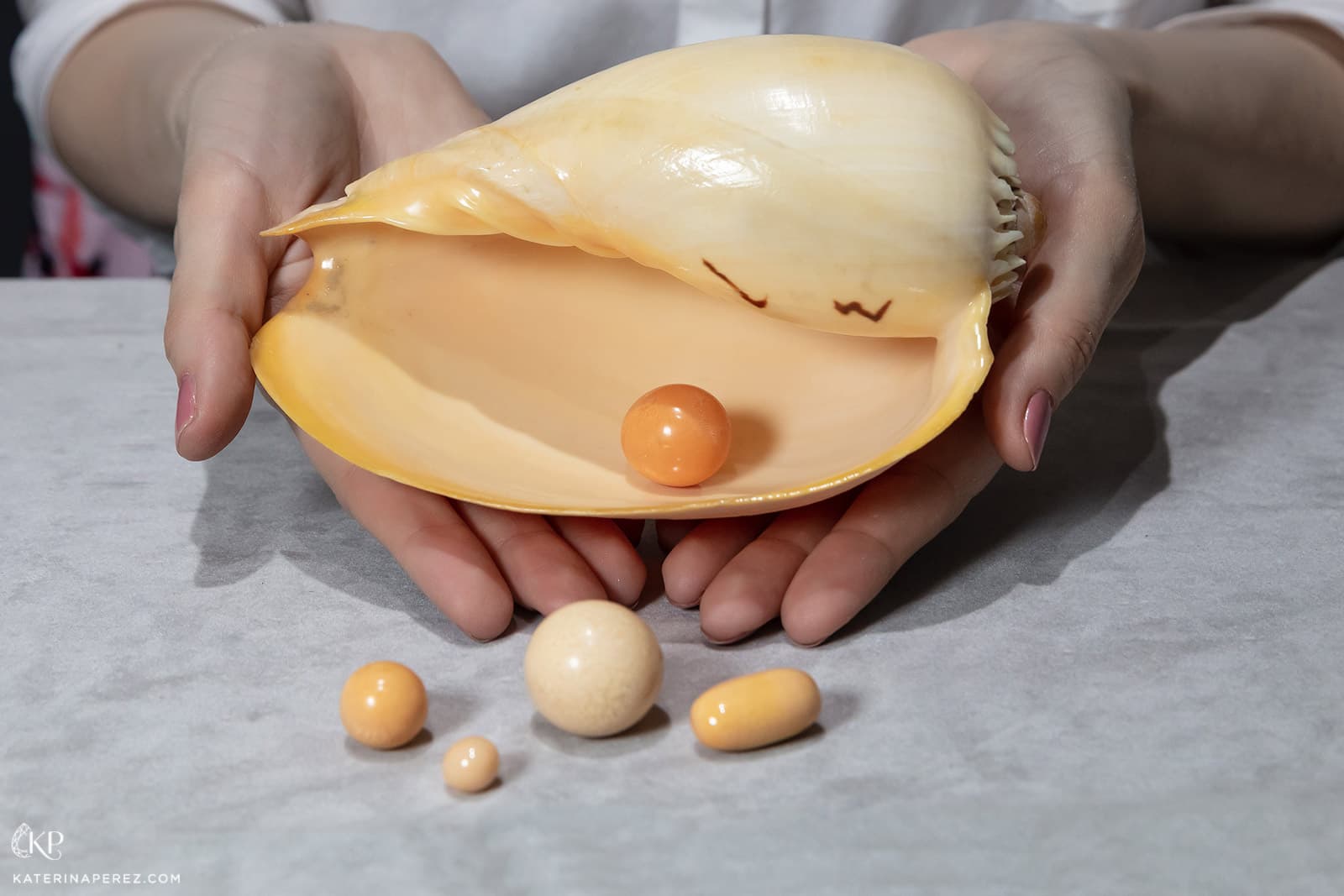
Shanghai Gems conch pearls
Presumably, you have already deduced that this effect is innate to the conch pearl, and it creates the illusion of firework flashes on the pearl’s surface – which is what makes the conch especially valuable. “Nowadays, customers often look for ‘flames’ at the surface of the pearl. This effect appears due to a crosswise array of bundles of aragonite laths or fibres, and when light strikes, the length of the bundle is reflected, as light falling in the section of the bundle is absorbed,” explains Luciano.
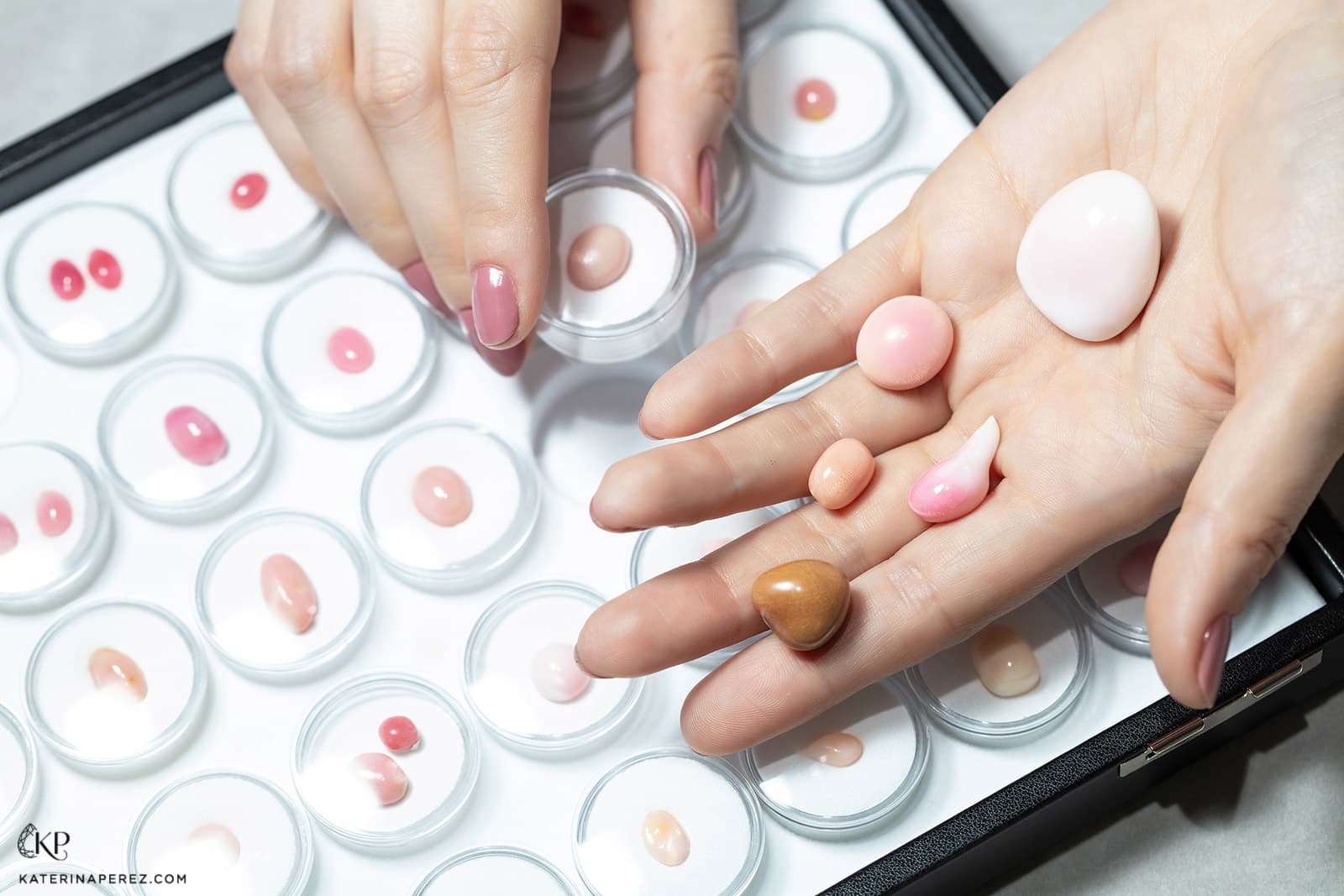
Shanghai Gems conch pearls
Colour in conch pearls is also very important. We find that pearls with strong pink, almost red colour are very much in demand as well as smooth pink with its lighter shades. Tastes differ so, for example, in Asia, people prefer deep red colours. – Luciano Policicchio
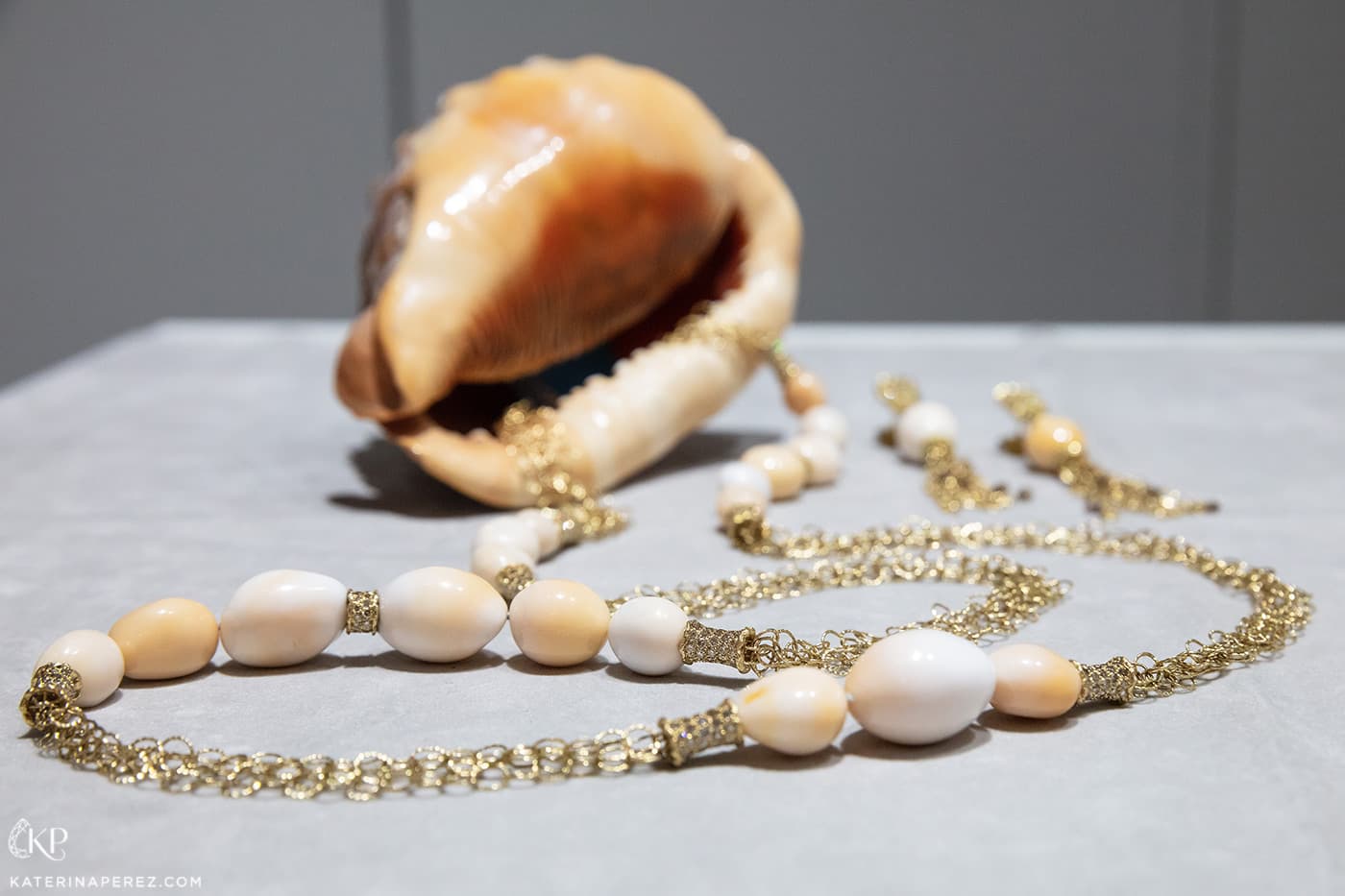
Shanghai Gems necklace and earrings with Cassis pearls and diamonds in yellow gold
During the conversation with Luciano, I realised how much you need to know about this pearl in order to understand it — and to make the right purchase. As it turns out, in addition to the colour of the conch pearl and its ‘flames’, the shape of pearls can greatly affect the price. “If the shape of a pearl is regular oval, drop or round, price will be higher than for an irregular pearl. From my experience, I have noticed that most conch pearls are oval and the perfectly round is particularly rare.” Of course, as is the case with any valuable mineral, the cost of this particular pearl increases in correlation with its diameter – specimens over 3mm are a rarity.
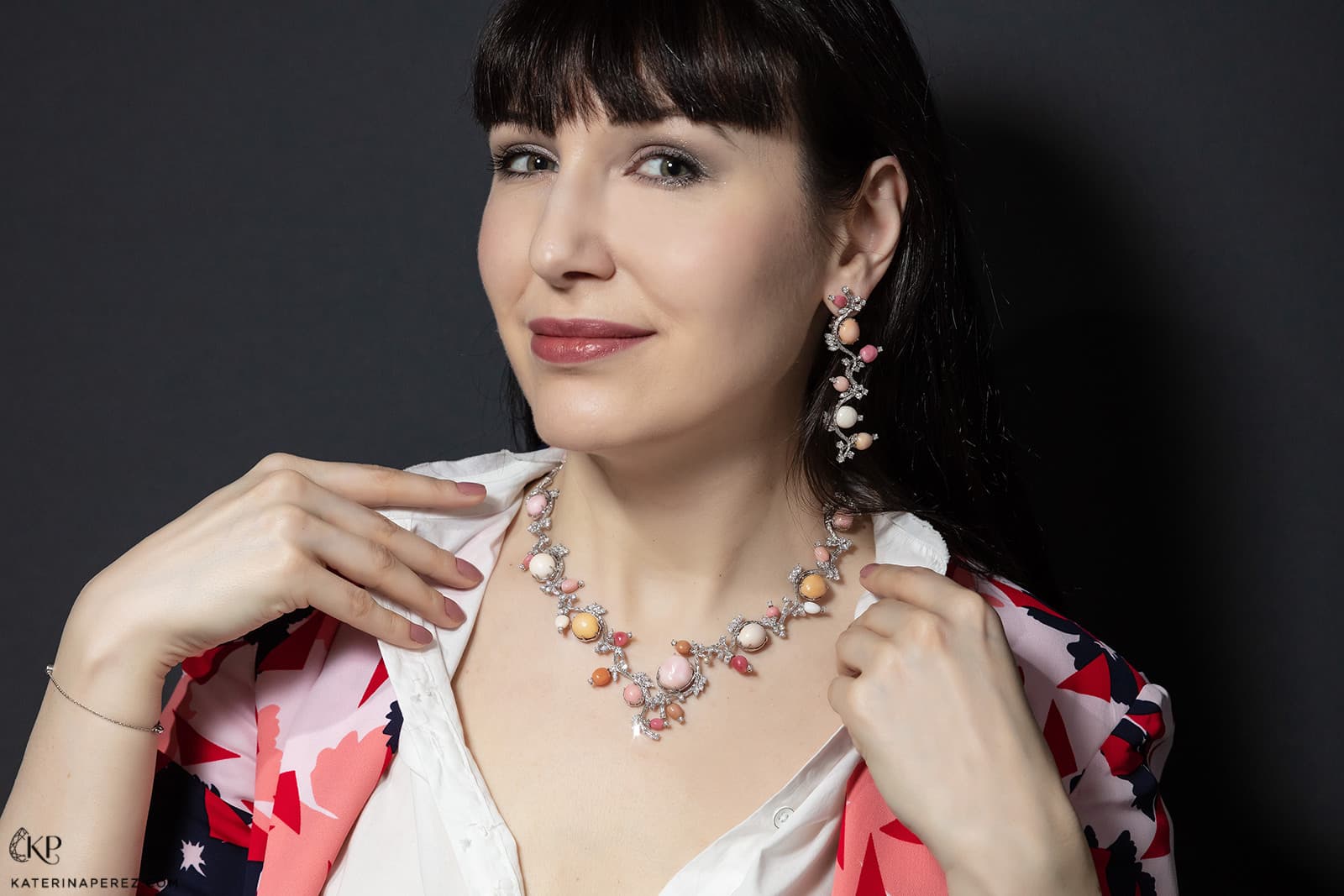
Shanghai Gems necklace with conch pearls and diamonds designed by Mauro Felter for Shanghai Gems SA
“During the last 20 years, conch pearls have increased dramatically in value mostly because of their scarcity and overfishing of this mollusc. These days, it is much harder to source new gem-quality conch pearls: only one can be found in every 10,000 shells, and only 10% of what is discovered is of high quality. The Queen conch pearl will undoubtedly become even more and more exceptional with the rising prices,” says Luciano. Some more facts I discovered about the conch pearl from my conversation with the Managing Director of Shanghai Gems S.A. included that they are mined south of Florida, near the Bahamas and offshore in the Caribbean Sea at a depth of 30m.
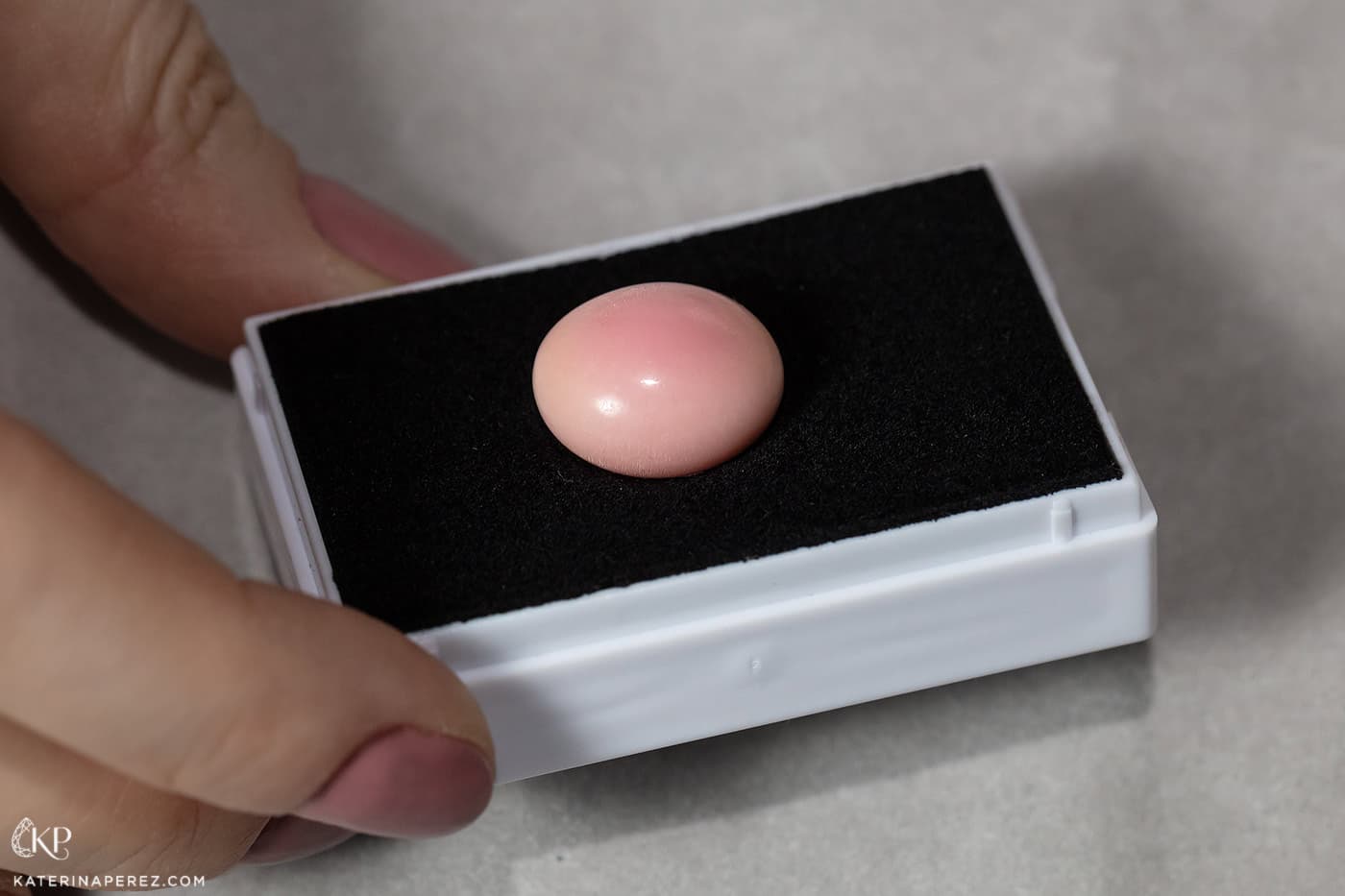
Shanghai Gems conch pearl
A mature shell is around four years old, has a diameter between 25mm and 30mm, and weighs anywhere between 3kg to 5kg. However, the chances of a pearl surviving to such an age in a shell are as slim as 1 in 2 billion. In 1992, C.I.T.E.S. (Convention on International Trade in Endangered Species of Wild Fauna and Flora) and the ‘Washington Convention’ decided to include these marine creatures in a list of endangered species, and the effect on the price of the conch pearl was that it increased dramatically!
The last thing to say is that a high-quality conch pearl will always be accompanied by SSEF or GGTL certification. So remember to ask for your certificate when making your purchase.

WORDS
Katerina Perez is a jewellery insider, journalist and brand consultant with more than 15 years’ experience in the jewellery sector. Paris-based, Katerina has worked as a freelance journalist and content editor since 2011, writing articles for international publications. To share her jewellery knowledge and expertise, Katerina founded this website and launched her @katerina_perez Instagram in 2013.
